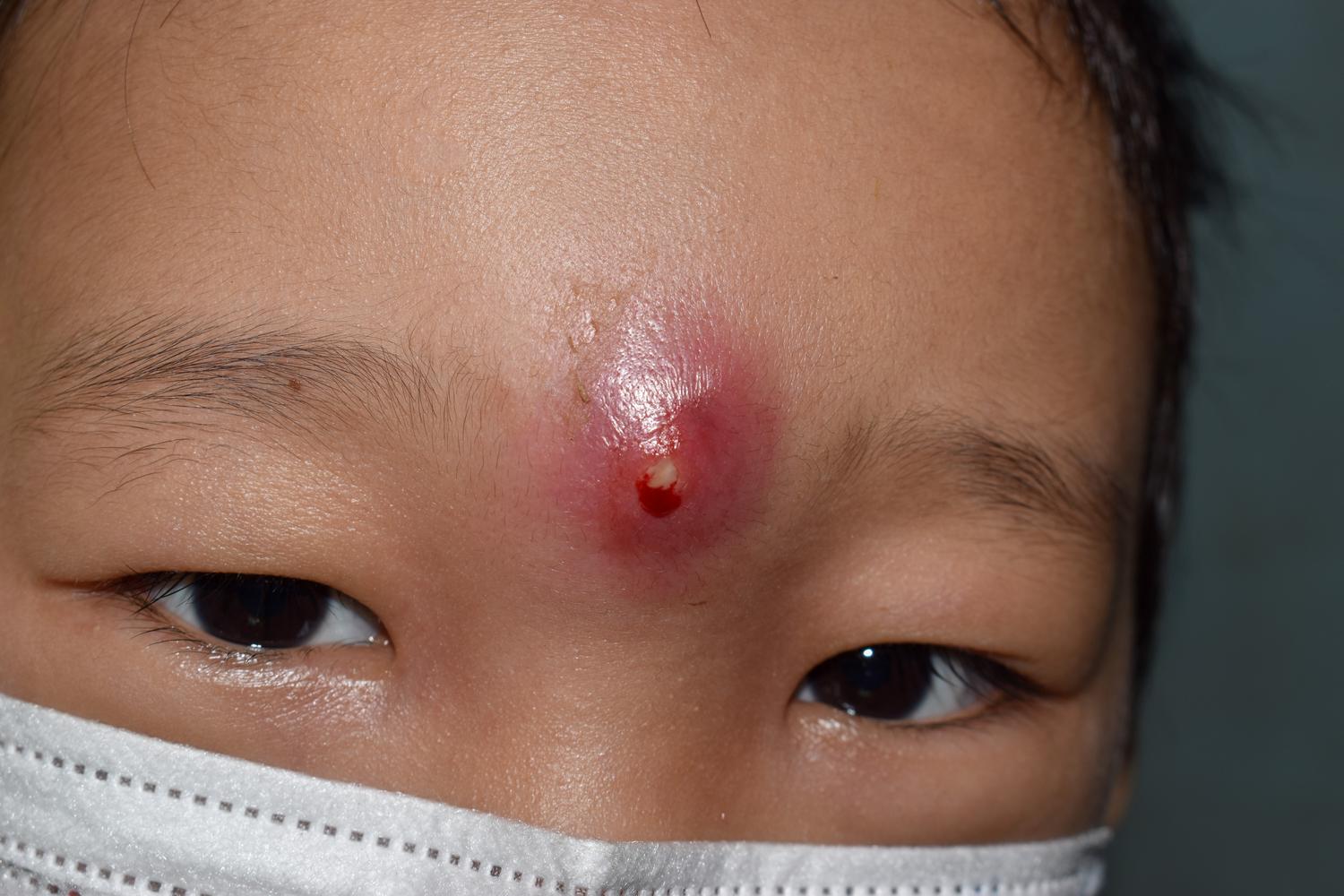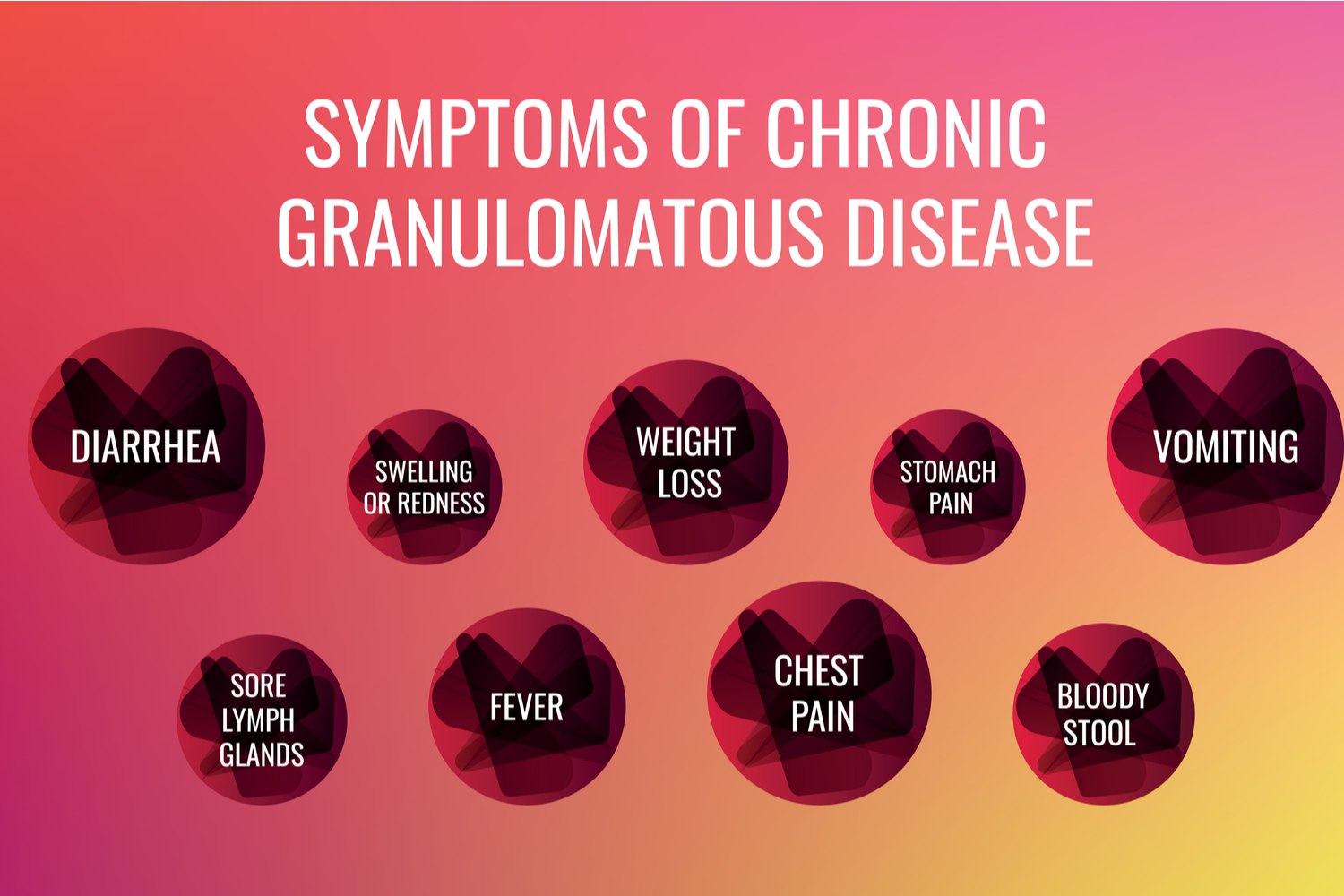Infections, bacterial or fungal, are nothing new to us. We have all been there and experienced some type of infection or another. Anytime a bacterium or a fungus enters your body, the immune system fights it to protect you. What if the immune system or your white blood cells couldn’t protect you from certain bacterial or fungal infections? Could it be CGD – Chronic Granulomatous Disease? What is pediatric chronic granulomatous disease?
The immune system cannot successfully fight off all types of infections. Sometimes, it just can’t do anything about it and requires external help. This is why some people take more recovery time than others for a similar type of infection. It all varies from body to body. However, for some, it could be a defect in the immune system, a disorder that makes you more prone to certain infections. The pediatric chronic granulomatous disease is one such condition that reduces the functioning of the immune system.
In This Article
- What is Pediatric Chronic Granulomatous Disease (CGD)?
- Who Is at Risk For Developing Chronic Granulomatous Disease?
- What Are the Symptoms Of CGD?
- What Causes Chronic Granulomatous Disease in Children?
- How is Chronic Granulomatous Disease (CGD) Diagnosed?
- Various Treatment Options For Pediatric Chronic Granulomatous Disease
- How Can You Prevent Pediatric Chronic Granulomatous Disease?
- How To Manage Pediatric Chronic Granulomatous Disease?
- When Should I See a Doctor About CGD?
- What Questions Should I Ask My Doctor?
- Living With Pediatric Chronic Granulomatous Disease
What is Pediatric Chronic Granulomatous Disease (CGD)?
Chronic Granulomatous Disease, more commonly known as CGD, is a primary immune deficiency disease (PIDD). It is an inherited disorder that can tamper with the way your immune system works. Most people receive a CGD diagnosis while they are still children.
In CGD, the white blood cells called the phagocytes cannot successfully kill certain types of bacteria or fungi. When the white blood cells fail to fight these infections effectively, it makes you highly susceptible to many types of infections. In some cases, these infections can turn life-threatening.
The infections can develop in the intestines, stomach, lungs, lymph nodes, liver, skin, or other areas. Sometimes, white blood cells gather in clusters at the sites of infection to fight off germs. When it affects the internal organs, there is a risk of developing abscesses (pus collections) in the organs. For some people, it can cause swelling in various parts of the body.
CGD is a rare type of inherited disorder that affects both males and females.
Who is at Risk For Developing Chronic Granulomatous Disease?

Since CGD is mostly an inherited disorder, it runs in the family. Children with a family history of this condition are at a higher risk of contracting this disease than others. However, in some rare cases, it can be spontaneous too, meaning it can be a spontaneous genetic mutation.
In some cases, CGD is an X-linked genetic disorder, which is caused by a defective chromosome in the genes. This subtype of CGD usually affects boys. Males inherit only one chromosome. And if they inherit the defective X chromosome from the mother, then the chances of them developing CGD are very high.
So, a male child whose mother is a carrier of the defective X chromosome causing CGD is at a higher risk than others for inheriting CGD. However, in other types of CGD (autosomal recessive), both males and females are at an equal risk of contracting the disease.
What Are the Symptoms of CGD?

CGD causes the white blood cells to underperform. The ineffective phagocytes are unable to fight bacterial and fungal infections effectively, leading to multiple issues that can sometimes even be life-threatening.
Since the white blood cells are unable to fight the infections, the healing time will be more than usual. In case of a wound, you will notice it may not heal easily as expected, and sometimes may even lead to inflammation around the affected area.
The infections can be mild or severe enough to damage the internal organs. Infections can appear on the skin or affect the liver, stomach, intestines, eyes, and even the brain.
Here are some of the classic symptoms of chronic granulomatous disease in children to watch out for
- Pneumonia caused by a fungus called Aspergillus
- Pneumonia that does not go away easily. It may take many weeks for a child to get better.
- Granulomas – masses of cells in infected or inflamed areas
- Fever
- Sore or swollen lymph glands
- Skin irritation, including swelling, redness, or a rash
- Redness or swelling in the mouth
- Gastric issues like vomiting, stomach pain, stool with blood, diarrhoea, and a pocket of pus near the anus that causes pain
- Recurrent infections by bacteria or fungi
- Abscesses near the internal organs, like the liver, lungs, or spleen
- Abnormalities in the liver
- Weight loss
What Causes Chronic Granulomatous Disease in Children?

A defect in the genes causes Chronic Granulomatous Disease, an inherited disorder. The mutation of any of the six different genes in a person can lead to a defect in a phagocyte, an enzyme in the body. This enzyme is an important component for the white blood cells to produce hydrogen peroxide, which helps in killing bacteria and fungi.
In one type of CGD, a defective gene on the X chromosome causes the disorder, so it affects more males than females. Other types of CGD are inherited through autosomal recessive traits. They can affect both males and females.
When Mother is a Carrier of the CGD Defective Gene
In the case of the X-linked genetic disorder, the mother can be a carrier but may not show any symptoms. If she is a carrier, with every successful pregnancy, she has about a 50% chance of having a carrier daughter, just like herself, and a 50% chance of having a daughter who is not a carrier. The daughter will not show any symptoms, but can pass them to her child later.
In the case of a son, the carrier mother has a 50% chance of having a son with this disorder and a 50% chance of having an unaffected son.
When Both Parents Are Carriers of the CGD Defective Gene
When both parents can be carriers, they can pass on one copy of the defective gene each to their child. It is when a child inherits 2 sets of defective genes, thereby developing an autosomal recessive disease. Here, there is a 25% risk of having an affected child in the next pregnancy.
How is Chronic Granulomatous Disease (CGD) Diagnosed?

One of the prevalent symptoms that can cause suspicion for CGD is a recurrent and chronic infection, especially if it is an infant or a small child.
When a person seems to have recurrent infections and the classic symptoms of CGD, the doctor or health care professional will take the following tests to confirm a diagnosis of Chronic Granulomatous Disease
- Detailed family medical history
- Scan of the bones (there is a suspicion of bone infection)
- Chest X-Ray
- CBC – Complete blood count
- White Blood cell function tests
- Biopsy of tissues from the infected organs or parts
- Liver tests
- Tests to check the spleen, liver, or lymph nodes for swelling
- Genetic testing to check for defective genes or gene mutations that can lead to CGD
- Neutrophil function tests to check how well a specific type of white blood cell (neutrophil) is functioning – Nitroblue tetrazolium test(NBT) and Dihydrorhodamine test (DHR)
In case you already have a child or children with CGD and are expecting the next child, the doctors will do prenatal testing. Doctors conduct this test on the fetus to check whether the baby in the womb has CGD.
Various Treatment Options For Pediatric Chronic Granulomatous Disease
Since CGD is an inherited disease, it cannot be prevented in the first child. One cannot be too sure the child will inherit the disease from their parents. Once the diagnosis is made, the doctor may recommend the following treatment options.
1. Precautions Against Infections

As discussed earlier, CGD has a deep impact on the immune system. It prevents the white blood cells from protecting the body effectively, thus resulting in an increased number of infections in the child. At the time of birth, children do not have any immunity. They have some from the mother, they pick up during the pregnancy period, and through the birth canal. The immune system starts developing and learning to protect the body as it gets exposed to various pathogens around it.
Since the immune system is not strong enough to fight against infections, it requires some external support. You can inculcate and teach the child to follow good hygiene at all times.
2. Vaccinations
Your child derives acquired immunity through vaccinations. The vaccinations aim to protect the child against specific diseases or infections, which the immune system is unable to fight or produce antibodies for the disease. Ensure your child gets all the vaccinations on time. Do not delay too much, and always check with the doctor before you decide to forego any vaccine.
3. Prophylaxis
As children with CGD cannot fight bacteria and fungi, it is best to prevent them. So, all children with CGD must have antibiotic and antifungal prophylaxis. Medications like co-trimoxazole and itraconazole are given regularly to protect these children from getting serious infections. This will, however, not cure the disease.
4. Bone Marrow Transplant

The bone marrow is where the white blood cells are produced. When there is a defect in these cells, the doctor might suggest a stem cell or a bone marrow transplant.
For a stem cell transplant, the doctors will take a healthy donor’s stem cells and inject them into the child. This donor needs to be a perfect match; otherwise, the body will reject the stem cells. After being injected, the body will have healthy white blood cells, which can produce antibodies for the infections in the body.
The transplant is considered a success when the new stem cell takes to the child’s body and continues to produce healthy white blood cells that are capable of fighting infections.
Doctors do not suggest a transplant for all children suffering from CGD. The recommendations will depend on several factors, such as
- The child’s health (they should be healthy enough to undergo this major procedure)
- Matching donor (only siblings can be a perfect match; the next circle of family or external donors may not be a perfect match. The level of match plays an important role)
- Child’s age: the younger they are, the better the success rate.
At present, the only way to cure a child with CGD is a bone marrow transplant. If done at the right time, these children can lead a healthy and normal life thereafter.
5. Gene Therapy
Gene therapy is still in the research phase and is not an approved method for treating CGD. It has some adverse effects, and researchers are trying to find ways to prevent such effects. Once they can come up with ways and means to perform gene therapy without any negative impact, it can be a good option for treating CGD.
How Can You Prevent Pediatric Chronic Granulomatous Disease?
CGD is a genetic disorder inherited through genes, and no one can control which genes they receive. If a family has a history of CGD, parents-to-be can seek genetic counseling to understand the risk of passing a gene mutation that may cause CGD to their child.
In the case of X-linked CGD, it can be very difficult to even predict that a child can have CGD, as the mother will be the main carrier but will not have any symptoms. So, over time, it is natural to forget about the disease. No one will anticipate it.
However, if a couple already has children with CGD and is expecting another child, they can perform prenatal testing to determine whether the fetus carries the CGD-causing gene.
How to Manage Pediatric Chronic Granulomatous Disease?

The best way to move forward once diagnosed with CGD is to do the following.
- Meet a Pediatric Immunologist (who would be well-versed in the management of these children).
- Go for regular check-ups as advised by the doctor to monitor the disease.
- Never take any infections lightly. Get them treated immediately.
- Take prescribed antibiotics and antifungal medication courses religiously to keep the infections under control.
- Be cautious of the surroundings and avoid unhygienic areas where you might contract an infection
- Never touch contaminated surfaces
- Always sanitize your hands after touching surfaces or before touching your skin or personal belongings
- Follow proper hygiene to prevent infections
- Avoid mingling with infected people
- Observe how the body is responding to the medications. If there are any symptoms or side effects, contact your doctor immediately
- Never let an infection spread or become serious. Always get it checked by a medical professional at the earliest.
Since CGD is mostly prevalent among kids and babies, it can be difficult to keep them from touching contaminated surfaces or following proper hygiene. As a parent, you can inculcate such practices in them by following the same around them.
It is definitely not an easy task, but small steps can make a big difference and set the tone for your child. Your child will have to learn to live with it, and the best time to start learning is at a young age. The good news is that your child can lead a normal life once a bone marrow transplant cures the disease.
When Should I See a Doctor About CGD?

If you are having recurrent infections, severe or serious in nature, it is always advisable to get them checked by a medical professional. Since CGD is a disorder that prevents the white blood cells from protecting your body from infections effectively, it is important to address it and get a proper diagnosis at the earliest.
If you notice the following, ensure you consult your doctor as soon as possible:
- Recurrent infections that do not seem to go away
- Inflammations around infected areas that do not subside as expected
- Chest infections that do not get better easily
- Repeated swelling of the lymph glands
- Prolonged fevers with no discernible cause
- If you already have a child with CGD and are pregnant again, you need to get a prenatal test
- In case you have a family history of CGD and you realize your infections are more severe and frequent
If you notice any of the symptoms, do consult a doctor at the earliest. The earlier you catch CGD, the better the outcome of the treatments will be. Since this disease paves the way for infections that can spread and cause damage to the body, it is important to control such infections at the earliest.
What Questions Should I Ask My Doctor?
When you visit your doctor for the first time after a confirmed diagnosis of CGD, you need to ask the following:
- Can you use any bacterial or fungal medications to treat the underlying infection?
- What are the other infections to look out for?
- Rarely, steroids are given to shrink granulomas in CGD. Can steroids weaken the immune system further and lead to more infections?
- If the intestines or stomach is affected, what foods to avoid?
- Can you perform a bone marrow transplant? If yes, what would be the best time?
Living With Pediatric Chronic Granulomatous Disease

If your child has been diagnosed with CGD, it can be very tough on them as well as you. With proper treatments and timely medications, the infections can be kept under control, and your child can lead an active life. it can be very close to other healthy children’s lives.
Though it can be a very tough journey, as a parent of a child with CGD, remember the following.
1. Maintain Hygiene
Never keep the surroundings unclean or unhygienic. Always follow strict hygiene in the house. Teach your child to be clean and safe even when they are in school or outside, away from you. Instill a strict hygiene practice in your child, so that they can always follow it even after they grow up
2. Minimise Contact With The Sick
Don’t let anyone with visible infections get too close to your child. Their immune system is weak and cannot fight infections easily.
3. Visit The Doctor as And When Needed
If you notice new infections or symptoms, do not take them lightly or procrastinate. Get it checked immediately. If your child is complaining of pain inside the body, ask your doctor for tests to check the internal organs.
4. Be Patient With Your Child
Never blame the child for contracting an infection. Yes, they might not have washed their hands as you taught them to, but that is not the only reason they could have caught the new infection. Remember, it is a child, and they are bound to do what kids around them do. Be patient with your child and the treatment. Remember, your child has no control over it.
5. Be Kind to Yourself
On days when you feel low and start blaming yourself, remember that the condition is inherited. You have no control over it, and no parent would willingly pass on a defective gene to their child. It just happened, and you need to cope with it in the best ways possible.
6. Research on The Latest Treatment Options
Keep your eyes and ears open for any new treatments or medications for CGD, so that you can discuss them with your doctor.
Coping with a Chronic Granulomatous Disease diagnosis can be challenging because it is a chronic condition. Receiving timely treatment from the right medical team helps you or your child lead a nearly normal life. By making a few lifestyle changes and following the treatment plan, patients can manage the disease well, avoiding flare-ups or complications. Doctors can completely cure the disease with a successful bone marrow transplant.

